This document discusses different types of queues, including circular queues and priority queues. It provides examples of how circular queues resolve the memory wastage problem of linear queues by connecting the last node to the first. Priority queues are described as storing elements according to priority level, with higher priority elements processed before lower priority ones. Examples of using priority queues include theatre seating and job scheduling. The key operations and implementation using a heap data structure are also summarized.
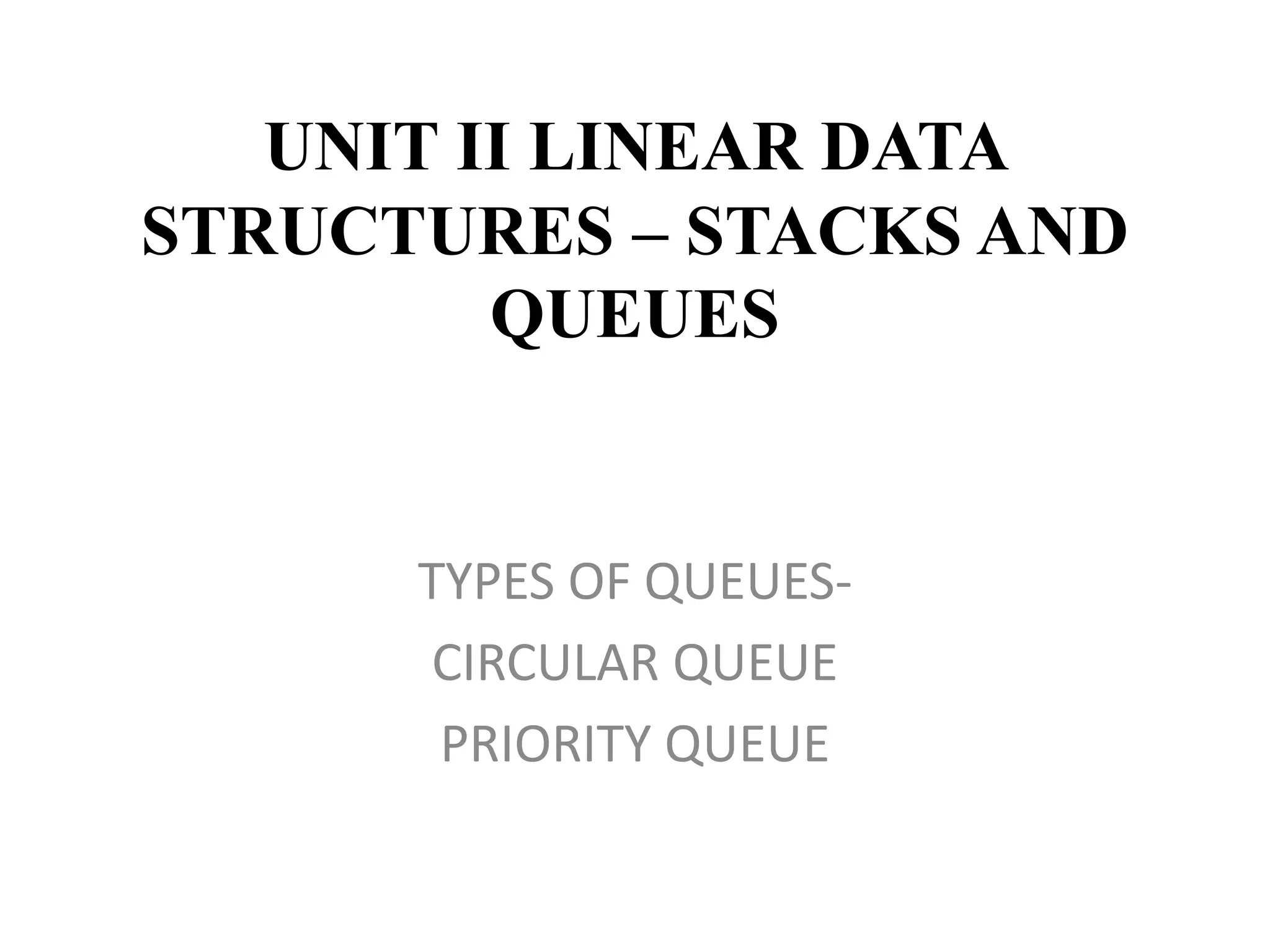
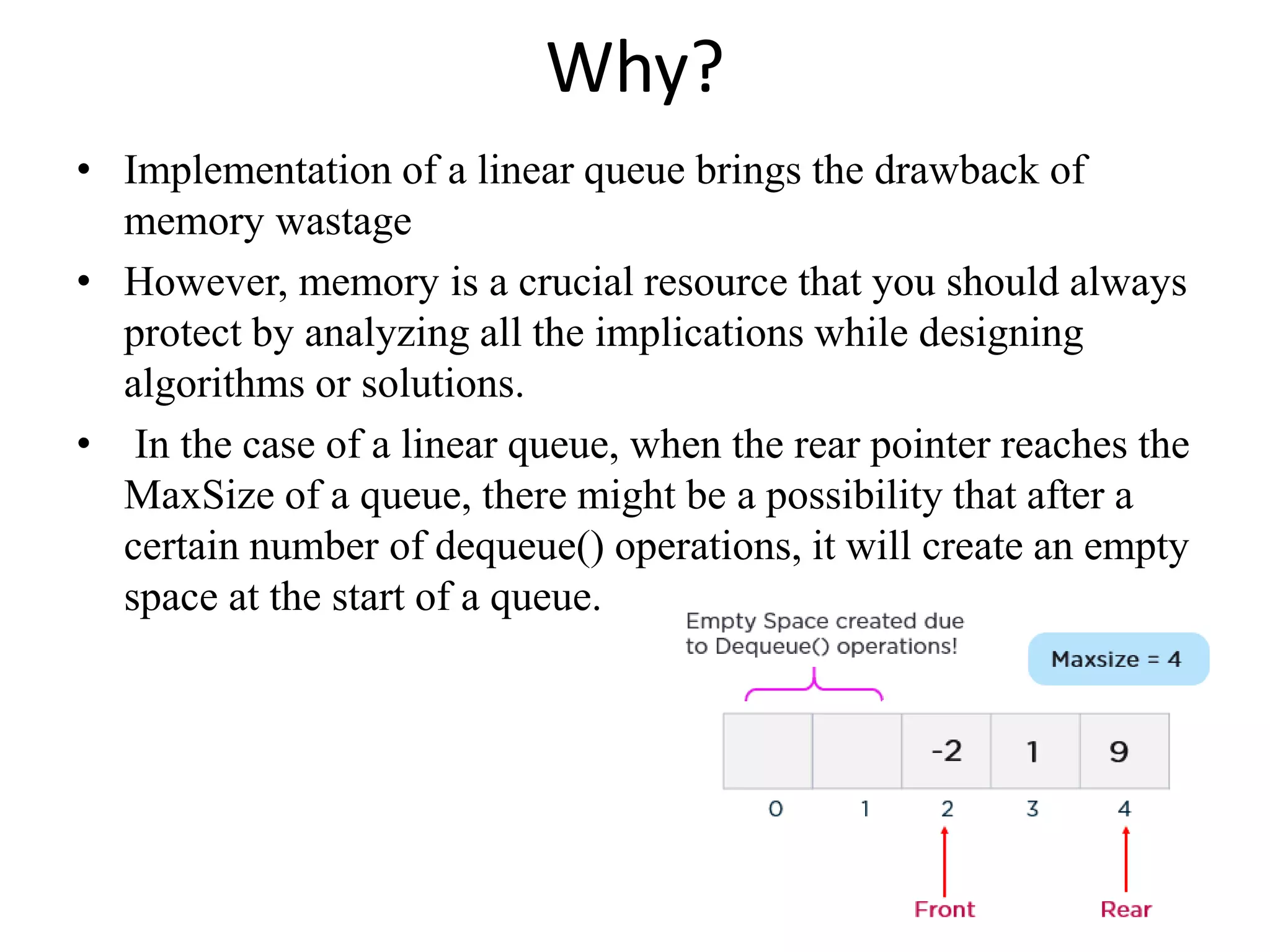
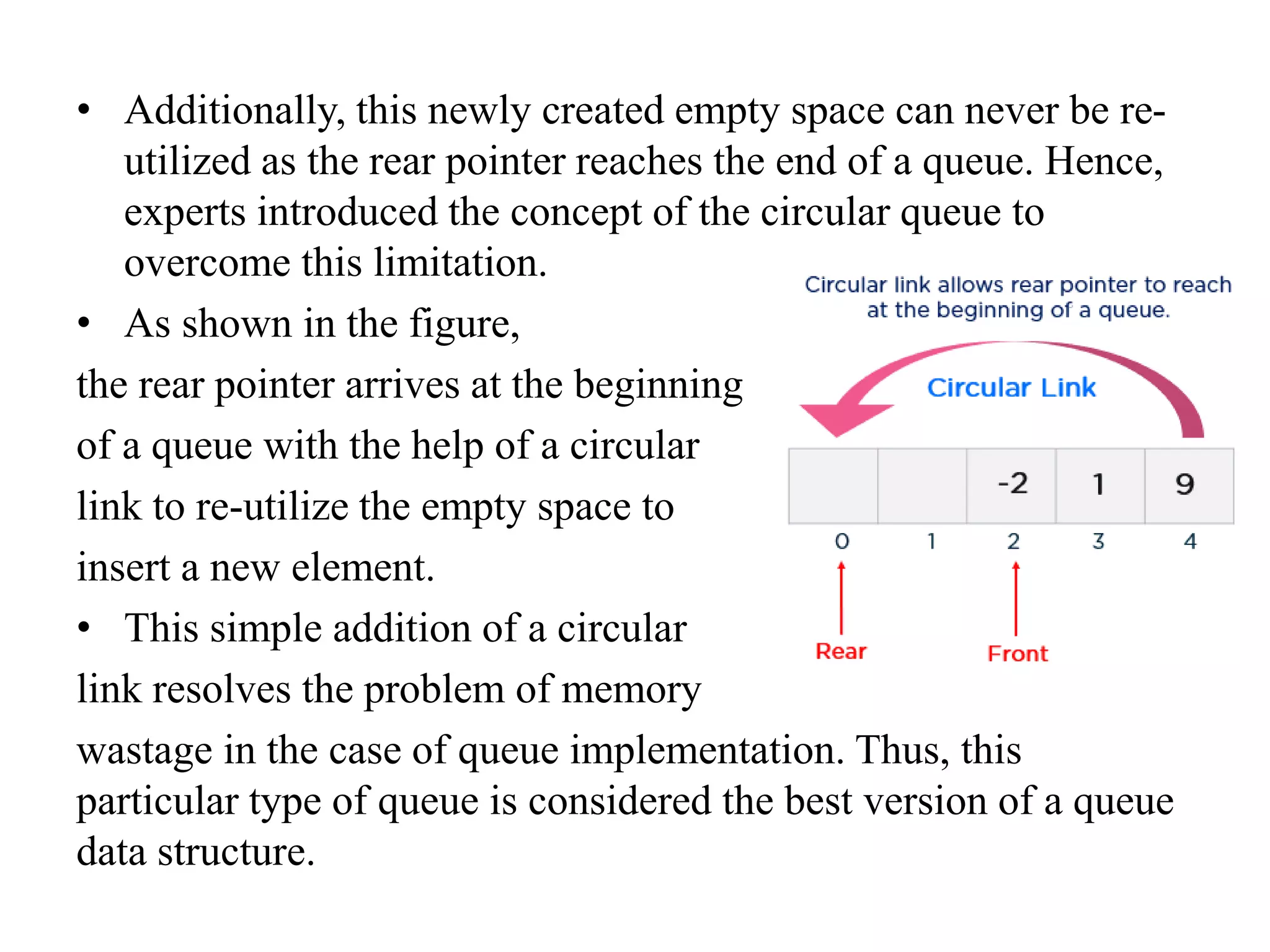
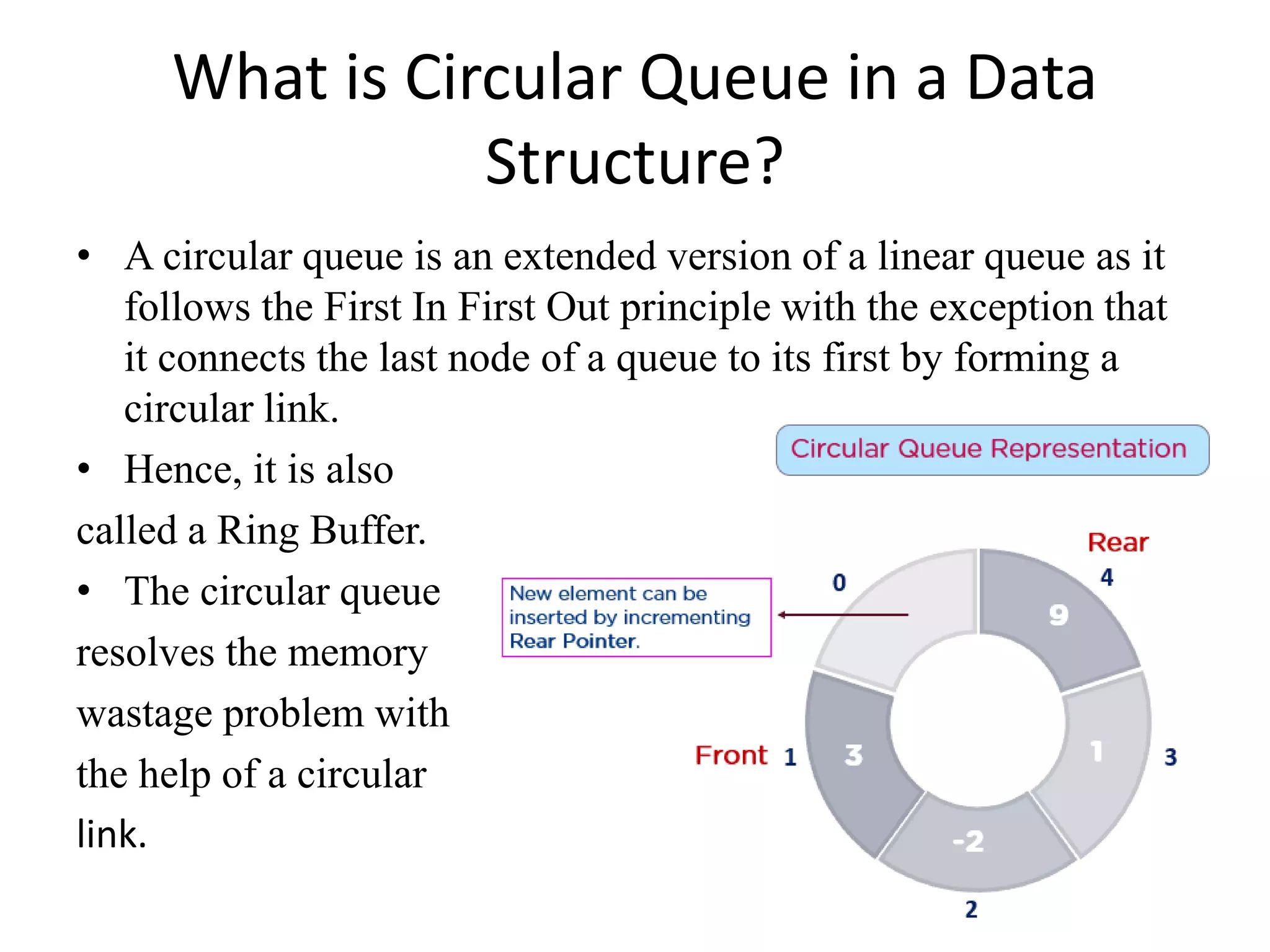
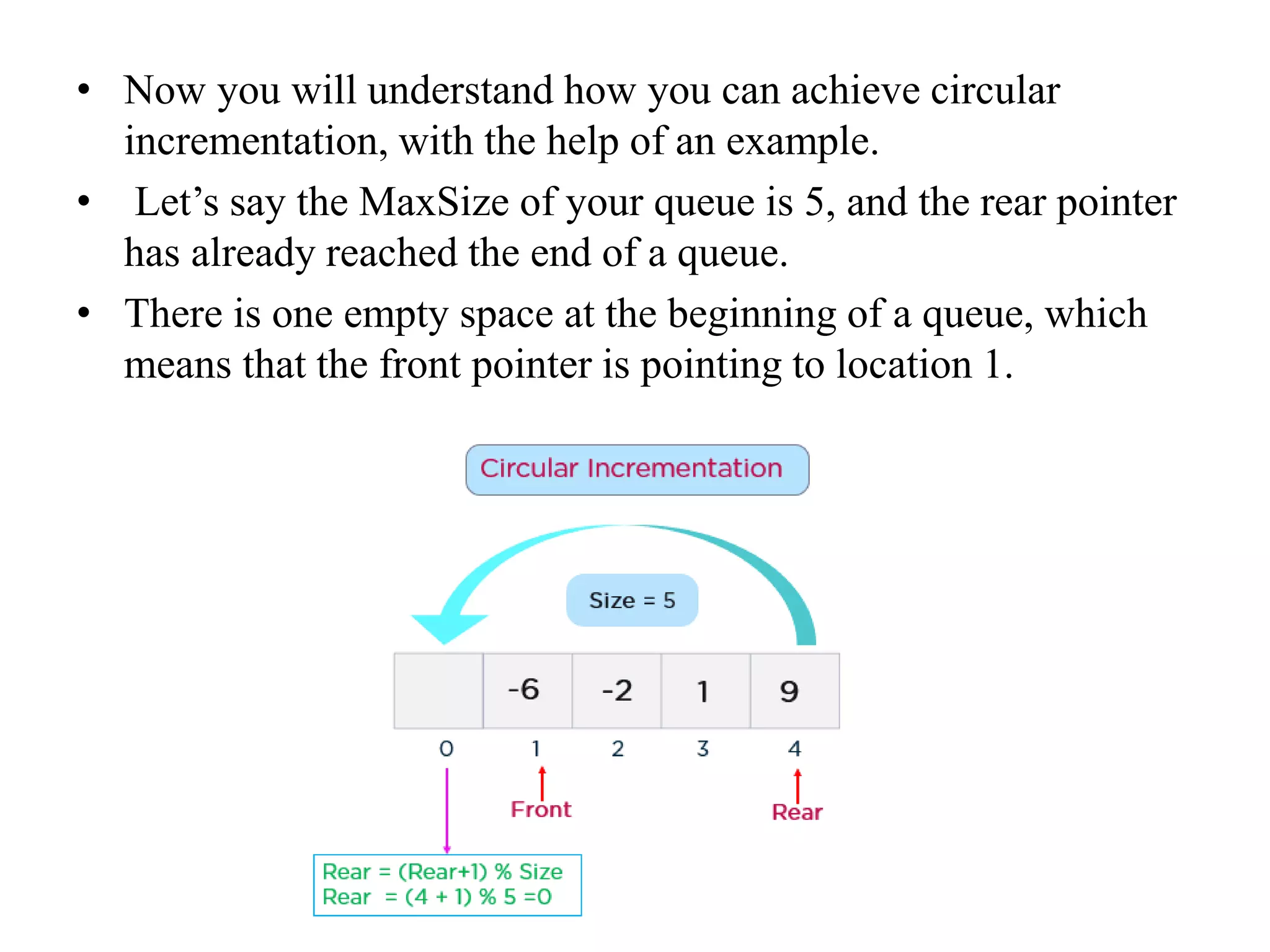

![Insertion in Circular Queue
Step 1 : If FRONT = (REAR + 1) % MAXSIZE : then
Write : “Queue Overflow” and return.
[End of If structure]
Step 2 : Read NUM to be inserted in Circular Queue.
Step 3 : If FRONT= -1 : then
Set FRONT = REAR =0.
Else Set REAR=(REAR + 1) % MAXSIZE.
[End of If Else structure]
Step 4 : Set CQUEUE[REAR]=NUM;
Step 5 : Exit](https://image.slidesharecdn.com/unitiilineardatastructurescircularqueue-220202054649/75/Unit-ii-linear-data-structures-7-2048.jpg)
![Deletion of Circular Queue
Step 1 : If FRONT = - 1 : then
Write : “Queue Underflow” and return.
[End of If Structure]
Step 2 : Set NUM = CQUEUE[FRONT].
Step 3 : Write ‘Deleted element from circular queue is :
",NUM.
Step 4 : If FRONT = REAR : then
Set FRONT = REAR = -1;
Else Set FRONT = (FRONT + 1) % MAXSIZE.
Step 5 : Exit](https://image.slidesharecdn.com/unitiilineardatastructurescircularqueue-220202054649/75/Unit-ii-linear-data-structures-8-2048.jpg)

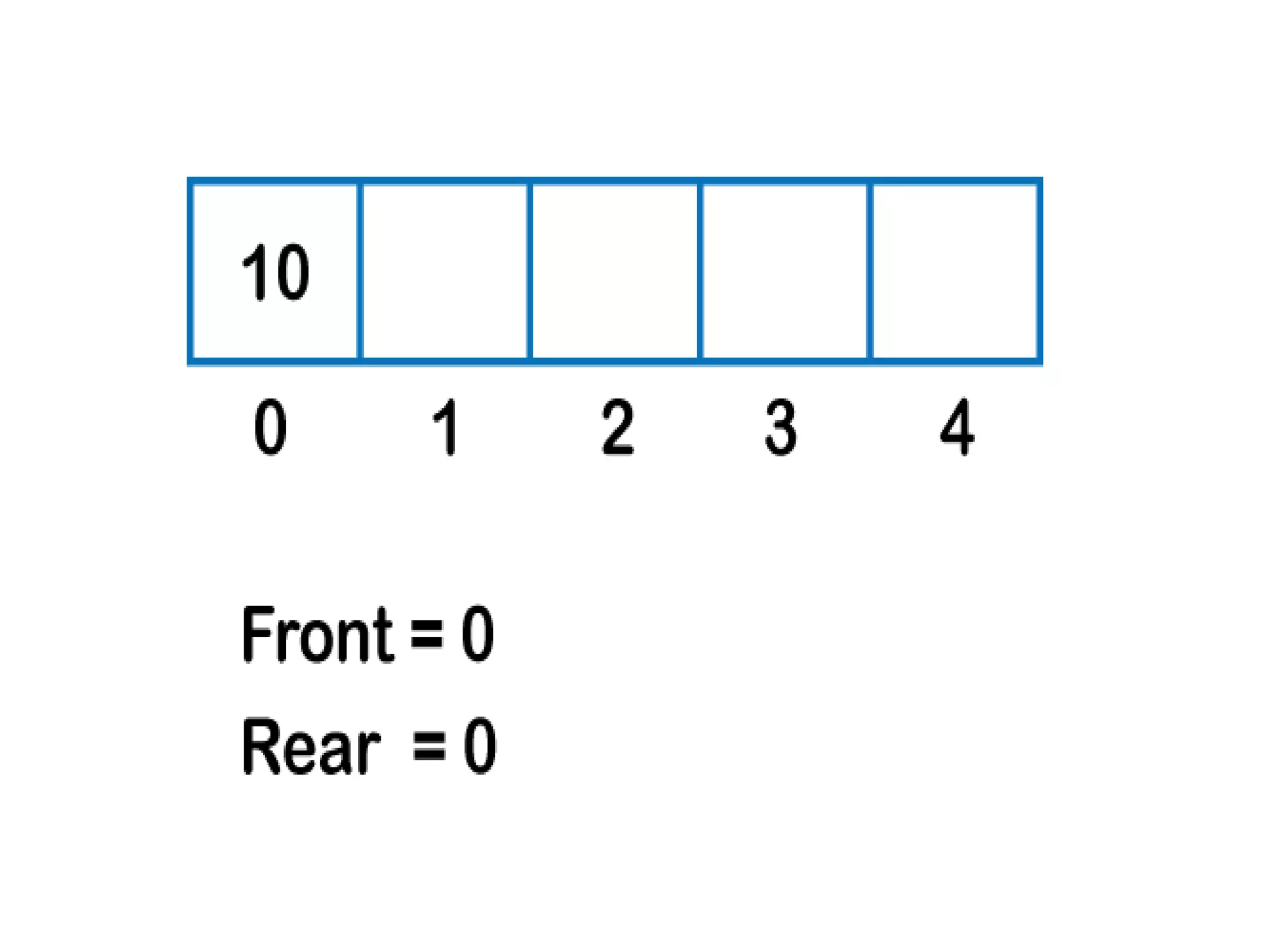
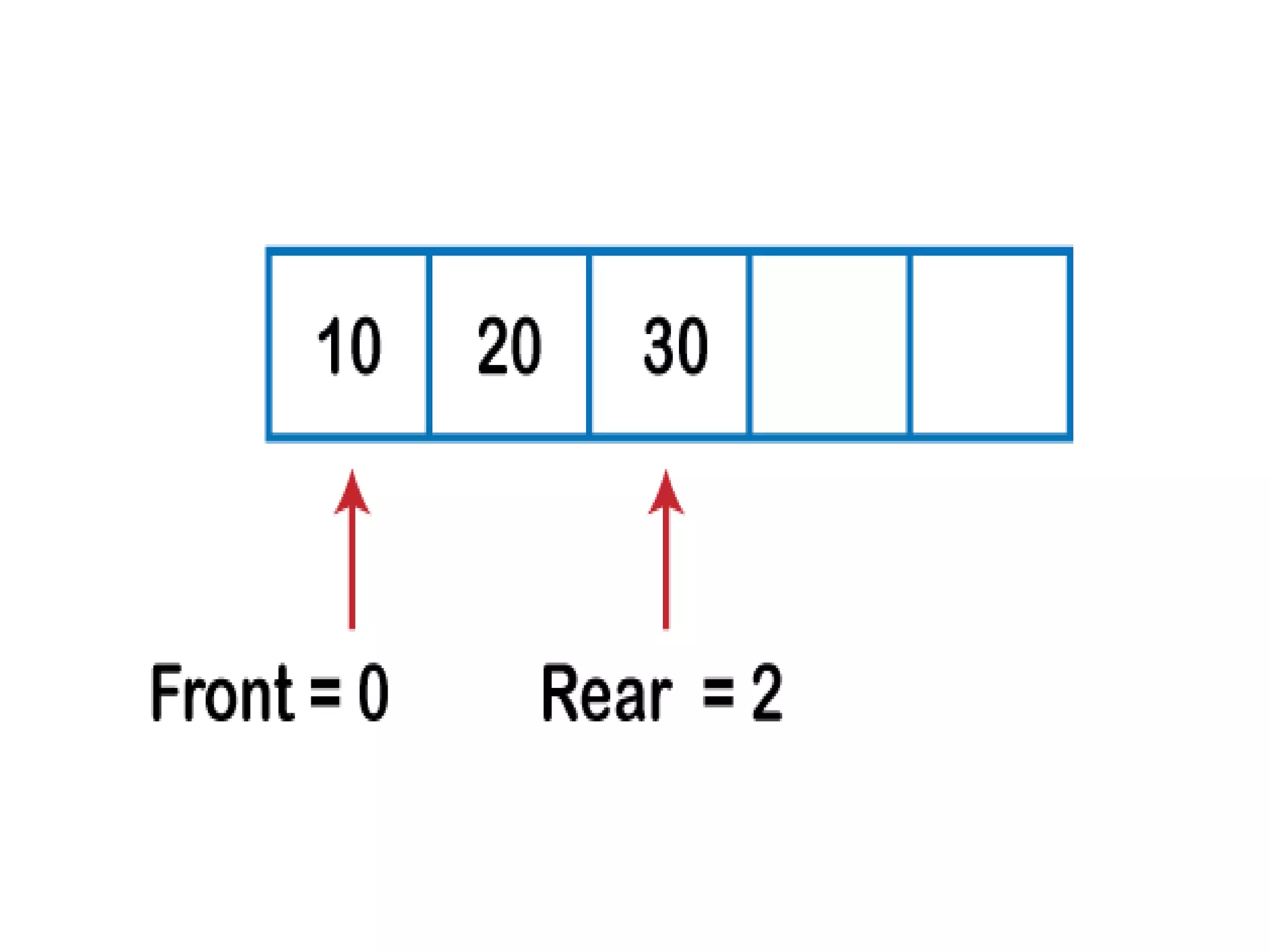
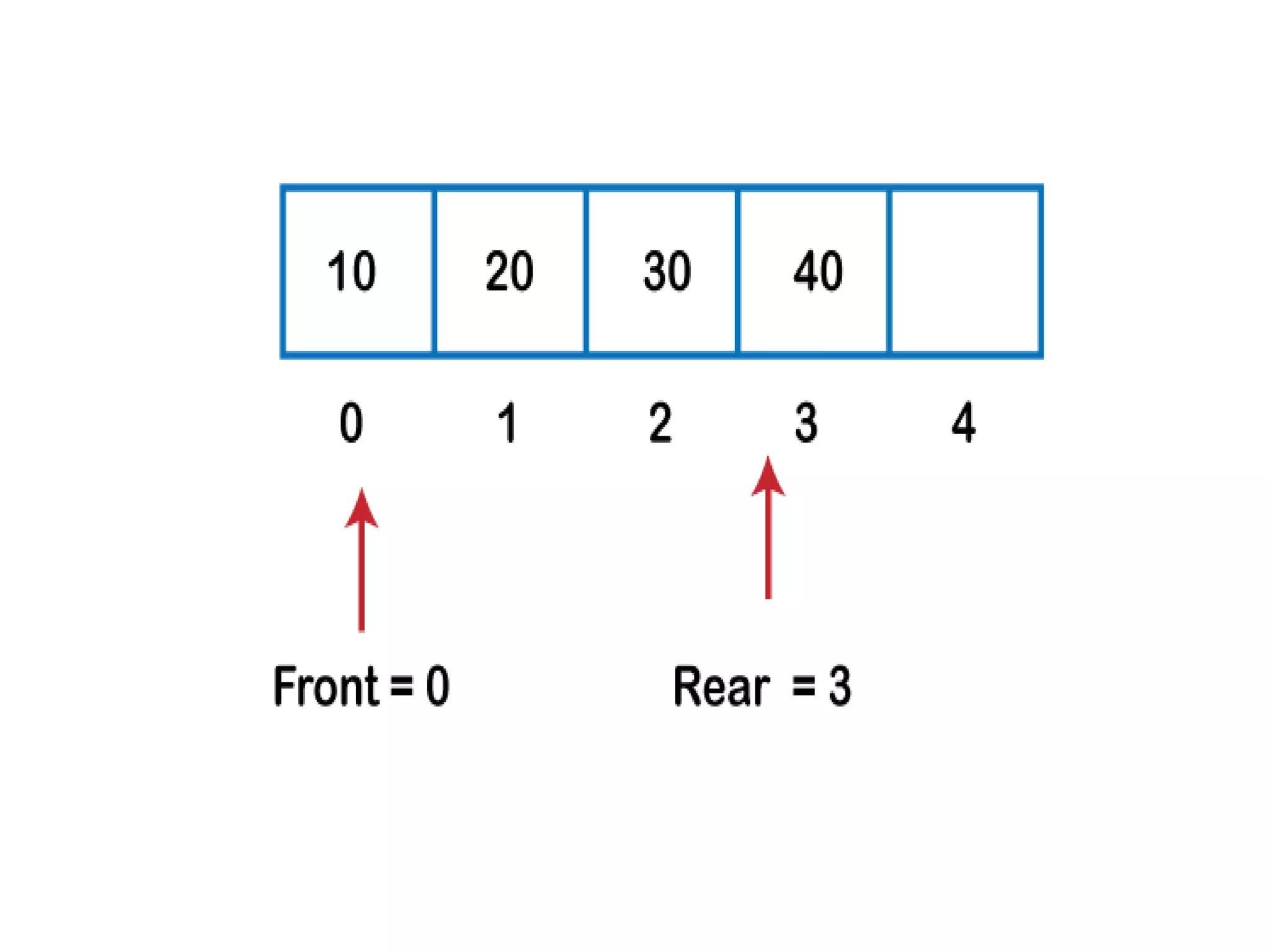

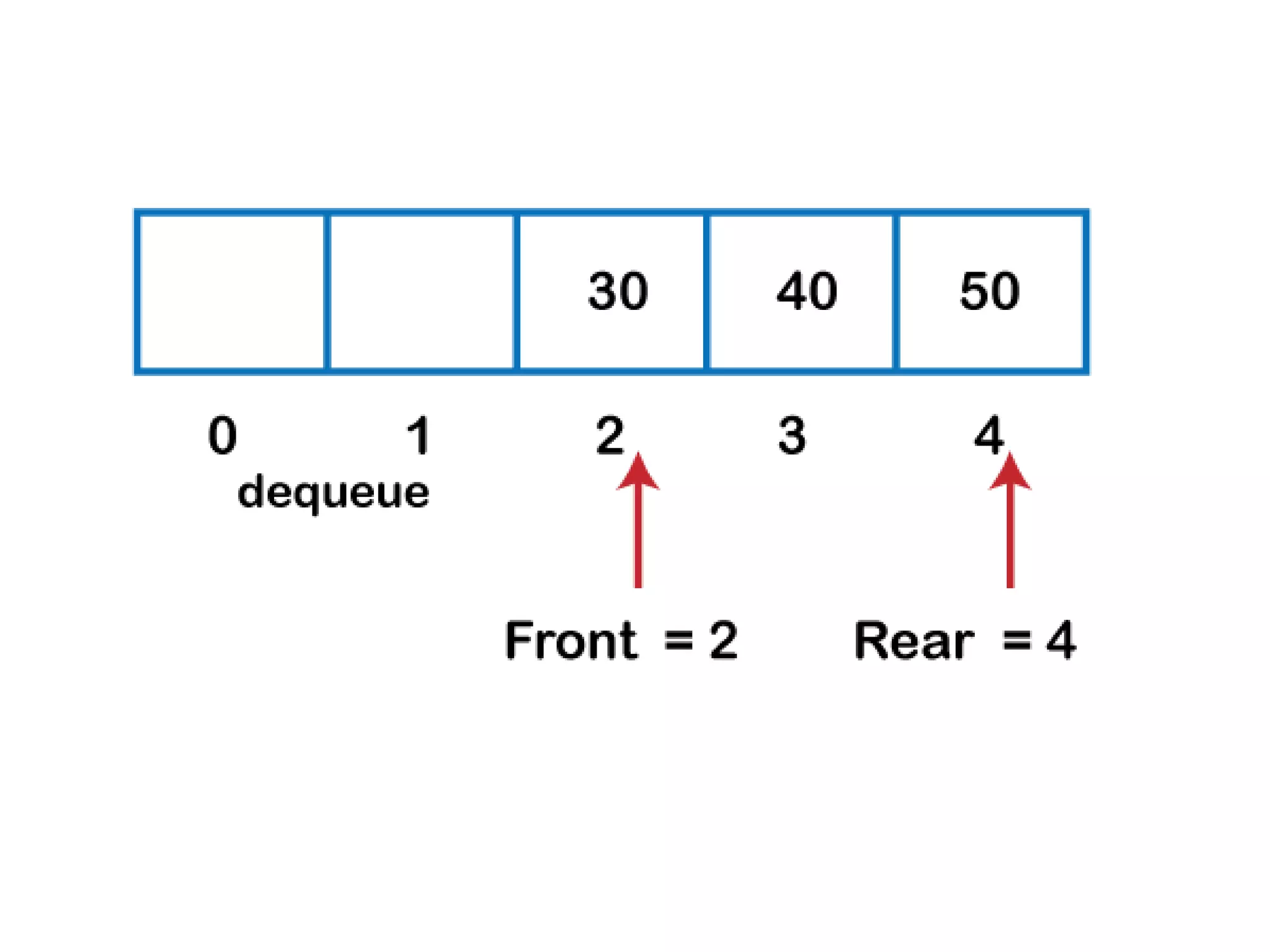
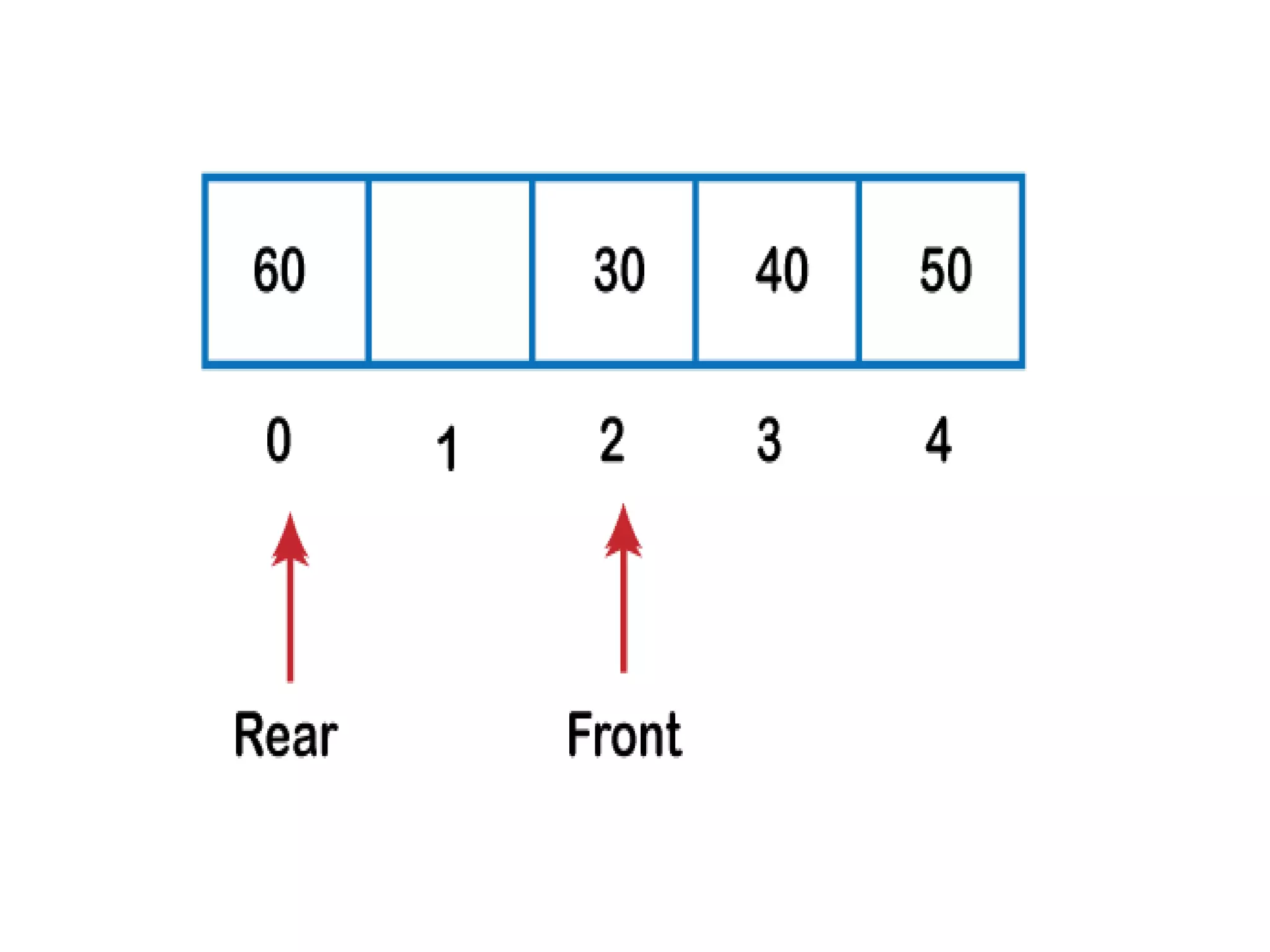
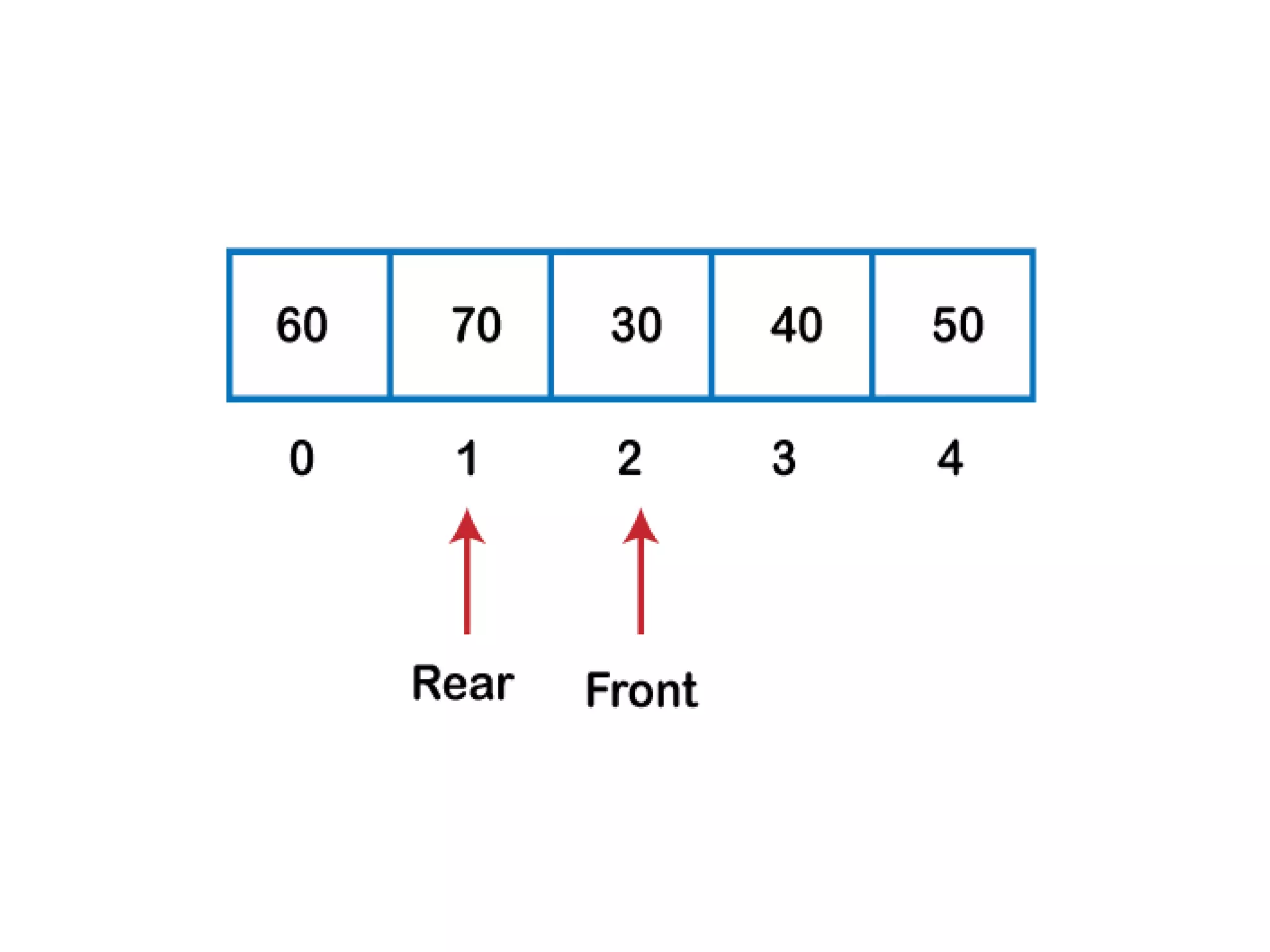
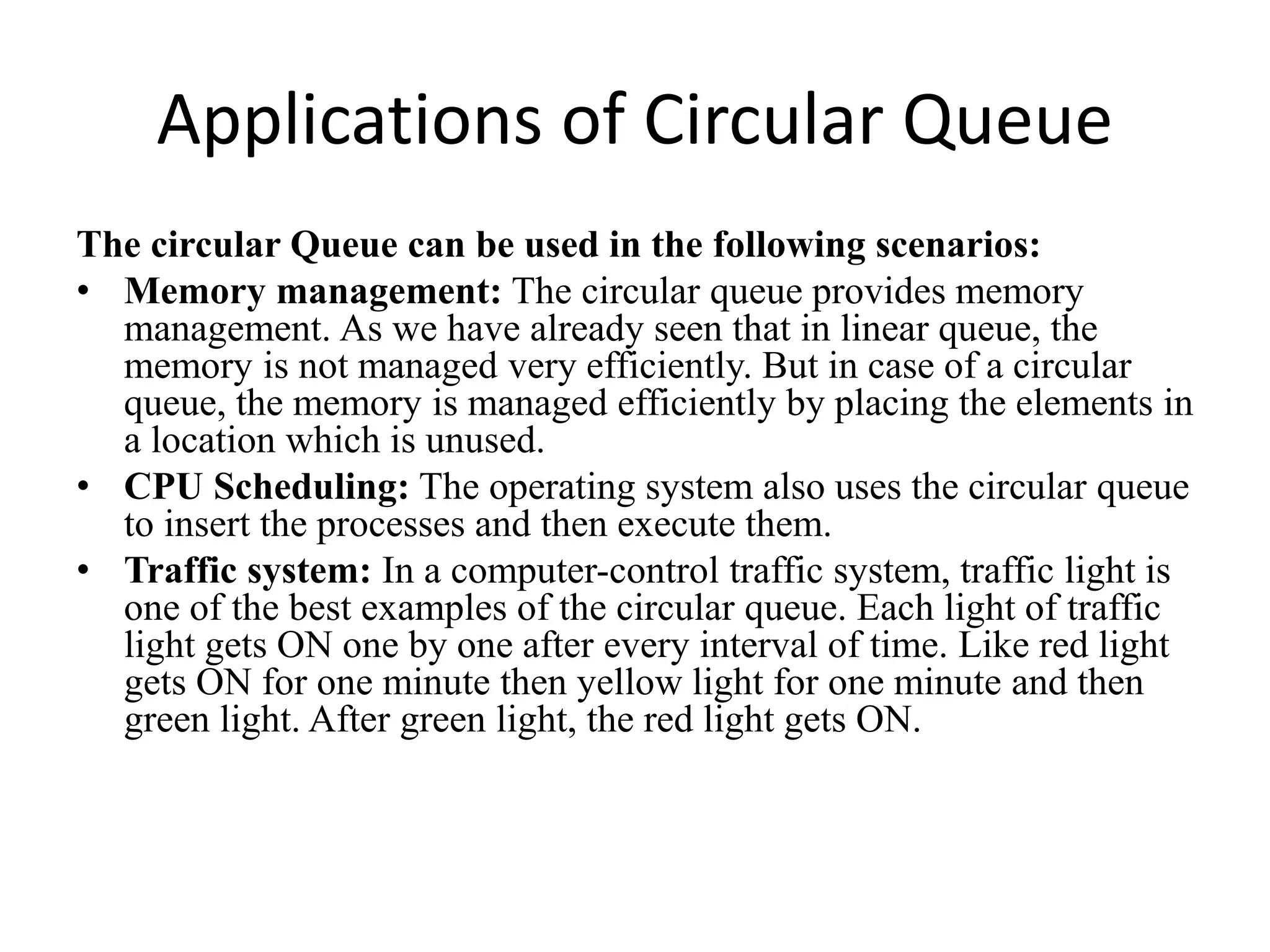


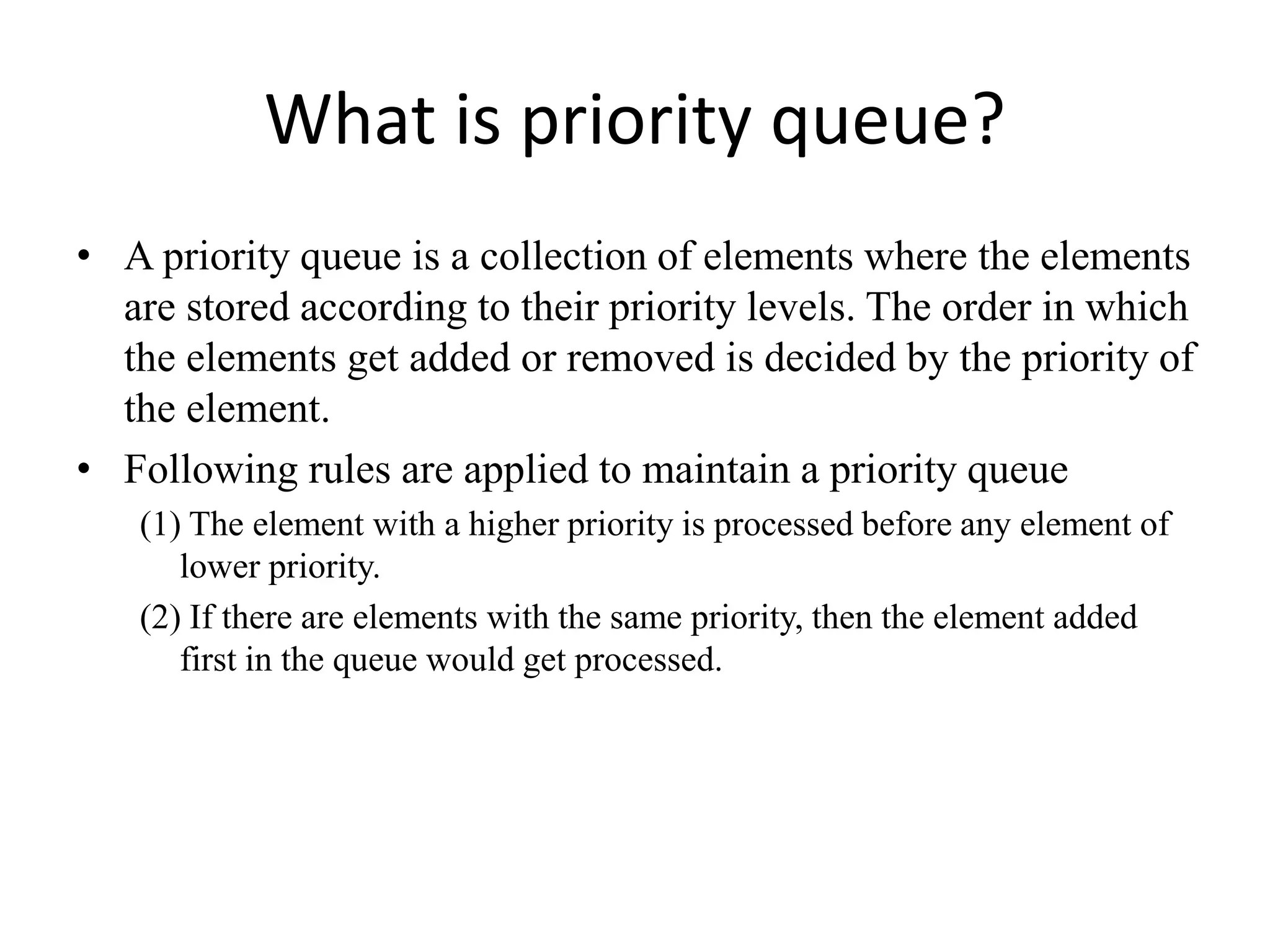
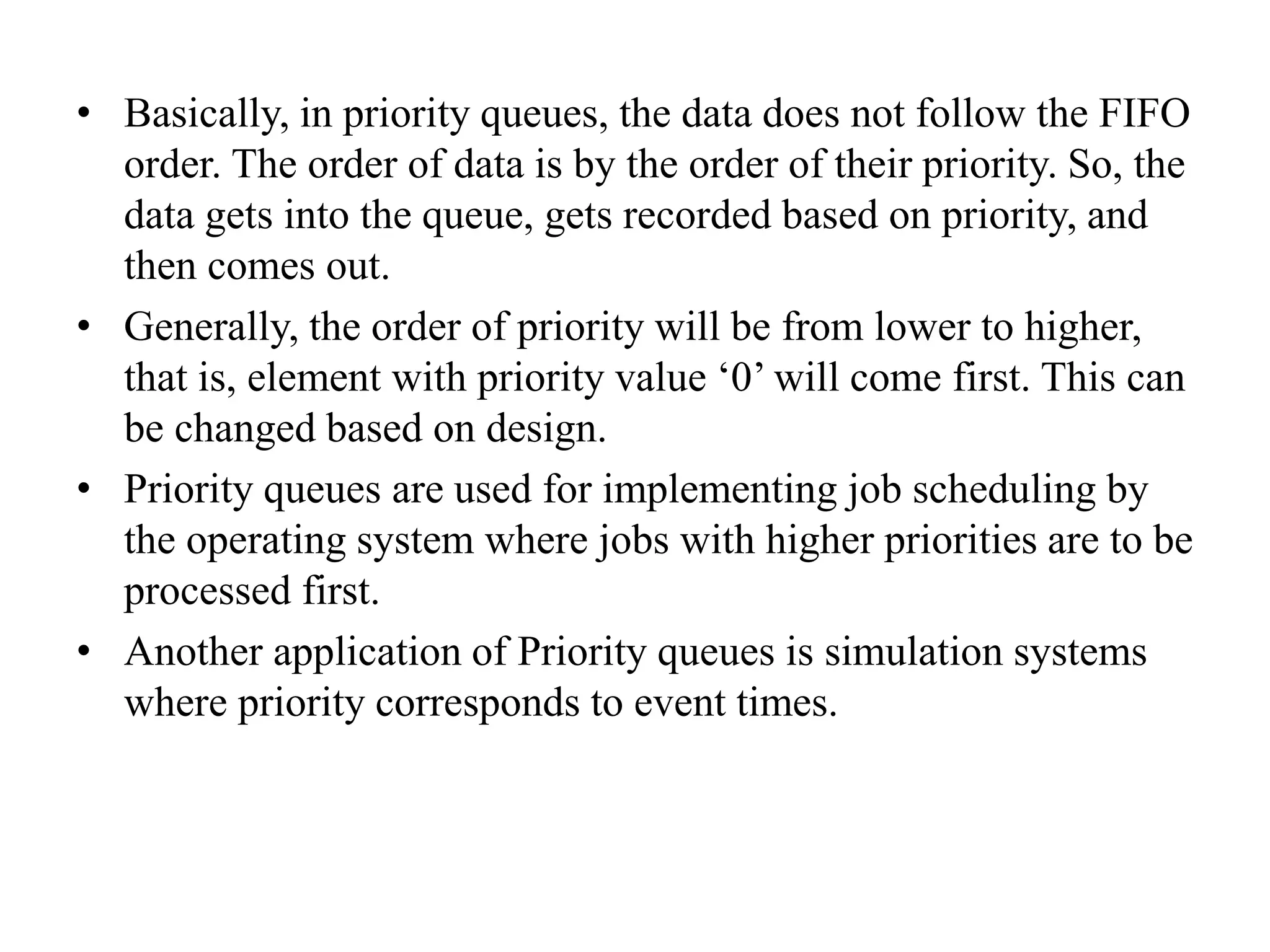

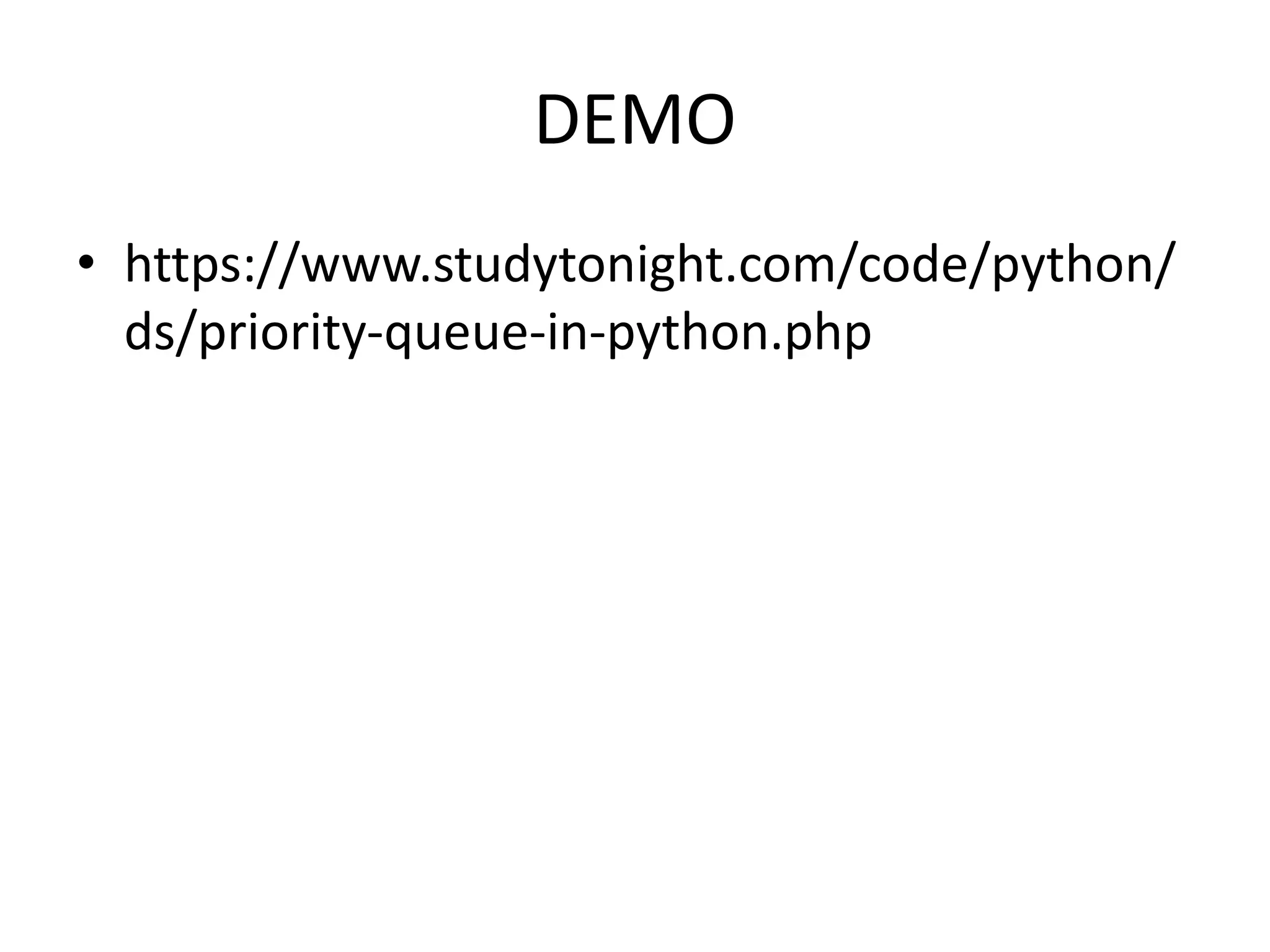
![# A simple implementation of Priority Queue
# using Queue.
class PriorityQueue(object):
def __init__(self):
self.queue = []
def __str__(self):
return ' '.join([str(i) for i in self.queue])
# for checking if the queue is empty
def isEmpty(self):
return len(self.queue) == 0
# for inserting an element in the queue
def insert(self, data):
self.queue.append(data)
# for popping an element based on Priority
def delete(self):
try:
max = 0
for i in range(len(self.queue)):
if self.queue[i] > self.queue[max]:
max = i
item = self.queue[max]
del self.queue[max]
return item
except IndexError:
print()
exit()
if __name__ == '__main__':
myQueue = PriorityQueue()
myQueue.insert(12)
myQueue.insert(1)
myQueue.insert(14)
myQueue.insert(7)
print(myQueue)
while not myQueue.isEmpty():
print(myQueue.delete())](https://image.slidesharecdn.com/unitiilineardatastructurescircularqueue-220202054649/75/Unit-ii-linear-data-structures-24-2048.jpg)
